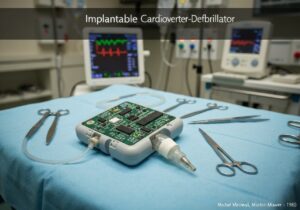To measure a user’s physiological response to a product or experience.
- المنهجيات: الهندسة, الجودة
Heart Rate Monitoring

Heart Rate Monitoring
- تجربة العملاء, التصميم المرتكز على الإنسان, التفاعل بين الإنسان والحاسوب, اختبار قابلية الاستخدام, تجربة المستخدم (UX), واجهة المستخدم (UI), اختبار المستخدم
الهدف:
كيفية استخدامه:
- In the context of usability testing, heart rate monitoring is used to measure a user's stress and excitement levels while interacting with a product. This can provide insights into their emotional response and help to identify areas of frustration or delight.
الايجابيات
- Provides objective data on a user's emotional response; Can identify issues that users may not articulate.
سلبيات
- Can be intrusive and may affect the user's behavior; The data can be difficult to interpret.
الفئات:
- بيئة العمل, تصميم المنتج
الأفضل لـ
- Evaluating the emotional impact of a new video game or a stressful checkout process.
Heart rate monitoring in usability testing finds its applications across a range of industries, including gaming, e-commerce, and healthcare, where emotional reactions can significantly influence user experience. In the gaming industry, developers utilize this methodology during beta testing by analyzing players’ heart rate fluctuations to understand moments of peak engagement and potential frustration during gameplay, enabling them to adjust difficulty levels or narrative pacing accordingly. Similarly, in e-commerce platforms, monitoring heart rates during checkout processes allows designers to pinpoint points of anxiety that may lead to cart abandonment, thus maximizing conversion rates. In the healthcare context, heart rate monitoring can be applied when testing patient management systems, where the emotional stress experienced by users (medical staff or patients) can directly impact their satisfaction and compliance. This method can be initiated by user experience researchers, product managers, or designers who seek to obtain objective data to complement qualitative feedback gathered during traditional usability testing. Participants can include target users from varying demographics to capture a comprehensive emotional response across different segments, which can provide a well-rounded understanding of user interaction and satisfaction. The collected data can be paired with follow-up interviews or surveys, creating a robust evaluative process that transcends subjective feedback alone and leads to more تتمحور حول المستخدم design refinements.
الخطوات الرئيسية لهذه المنهجية
- Identify the task or interaction the user will perform.
- Measure baseline heart rate prior to the task to establish a control.
- Monitor heart rate continuously during the user interaction.
- Identify peaks and troughs in heart rate data to correlate with user actions.
- Analyze heart rate data alongside qualitative feedback from participants.
- Compare emotional responses across different user interactions or test conditions.
نصائح للمحترفين
- Integrate heart rate data with qualitative feedback to uncover discrepancies between physical responses and user perceptions.
- Utilize time-segmented analysis of heart rate spikes to correlate specific design elements or interactions with emotional responses.
- Combine heart rate variability measurements with other biometric signals (e.g., skin conductance) for a holistic view of user emotion during interactions.
لقراءة عدة منهجيات ومقارنتها, نوصي باستخدام
> مستودع المنهجيات الشامل <
مع أكثر من 400 منهجية أخرى.
نرحب بتعليقاتكم على هذه المنهجية أو المعلومات الإضافية على قسم التعليقات أدناه ↓، وكذلك أي أفكار أو روابط متعلقة بالهندسة.
السياق التاريخي
1965
1970
1980
1980
1960
1969
1976-05-28
1980
1990
(إذا كان التاريخ غير معروف أو غير ذي صلة، على سبيل المثال "ميكانيكا الموائع"، يتم تقديم تقدير تقريبي لظهوره الملحوظ)









منشورات ذات صلة
إدارة عمليات التصنيع (MOM)
نظام تنفيذ التصنيع (MES)
خطة مراقبة التصنيع
الاختبار اليدوي
مخططات تقييم المناولة اليدوية (MAC)
أداة تقييم مخاطر المهام اليدوية (ManTRA)